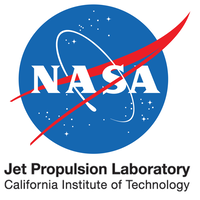Part 3 of 12 Parts
Sixteen research projects drawn from NASA, the space industry and academia will receive grants from the NASA Innovative Advanced Concepts (NIAC) program in order to study the feasibility of their concepts. Here are more of the projects:
4. Kilometer-Scale Space Structures from a Single Launch
Zachary Manchester
Carnegie Mellon University
Long duration manned spaceflight poses serious problems for the human body including muscle atrophy, bone loss, degradation of eyesight, cardiac issues, and suppression of the immune system. Many of these problems arise from the lack of gravity in space. It is possible to generate artificial gravity in space by rotating a space habitat. Unfortunately, there are serious challenges for using such a system to generate artificial gravity, Human beings experience motion sickness and discomfort when subjected to a rotation rate more than a few revolution per minute. In order to produce artificial gravity equivalent to gravity at the surface of the Earth, a structure about fifteen hundred feet in size in needed for a rotation rate of one to two revolutions per minute.
In order to accomplish this requirement, there have been recent designs developed for using advanced mechanical metamaterials to design a lightweight deployable structure that would have an expansion ratio of one hundred and fifty to one. Such a structure could be launched inside the fairing of a Falcon Heavy rocket. Once in orbit, the structure could be deployed autonomously to a final size of more than a kilometer or more without requiring complex assembly in orbit by astronauts. This current project will study a mission concept that is similar to NASA’s planned Lunar Gateway which calls for kilometer-scale deployable structures to form the backbone of a huge rotating space station.
5. PEDALS: Passively Expanding Dipole Array for Lunar Sounding
Patrick McGarey
NASA Jet Propulsion Laboratory
Understanding the subsurface composition and structure of terrestrial planets is the key to revealing their geological history including crustal differentiation, volcanism, sedimentation, basin formation and volatile transport and accumulation. One of the common geophysical techniques for probing the subsurface is the use of radar which can be implementation through Earth-based bistatic, orbital or surface configurations. In previous cases, missions which incorporated radar instruments operate antennas which have fixed resonant frequencies. This is usually limited to one or two operating frequency bands.
MARSIS, an orbital instrument which was sent to Mars, has a one hundred- and thirty-four-foot antenna sounding radar. This provides kilometer scale penetration and global coverage. The collection of data is hindered by relatively low signal-to-noise ratio, coarse resolution, and ambiguous surface reflection that arise from topography. With regard to the consideration of frequency limitations that constrain the use of single, fixed-length dipole, this project proposes the Passively Expanding Dipole Array for Lunar Sounding (PEDALS). This Array is made up of a series of discrete dipoles that, through unique combination and couplings of short dipoles into larger ones, extends the effective resolution by allowing for variable frequencies and depths. The key innovation of PEDALS is its unique capability to measure a wide and continuous ranges of depths from different spatial locations. No prior ground penetrating radar implementation has been able to do this. PEDALS deploys four tethers in a cross pattern by leveraging shape-memory materials for passive unrolling and can be incorporated on a variety of lunar missions. Key science goals that are motivating a PEDALS mission include developing and understanding the crustal structures at depths comparable to the thickness of the crust, as well as surveying the distribution of volatiles in the regolith and subsurface void detection.
